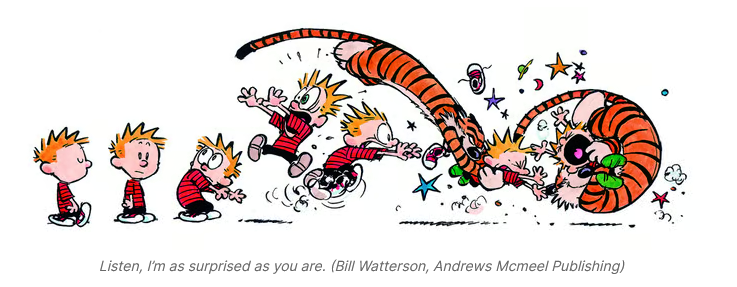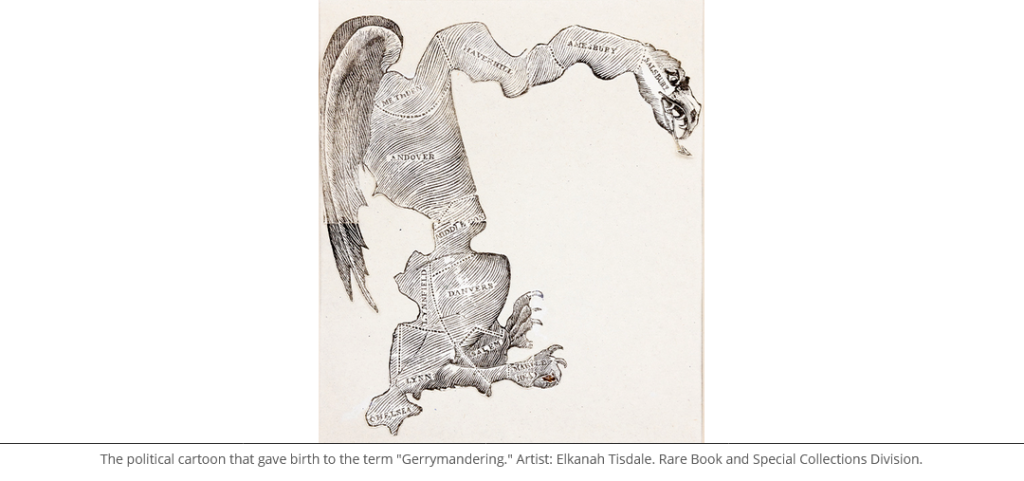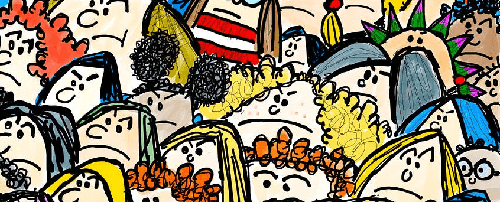Wayback Whensday Gerrymandered
Skip to commentsAugust Froehlich, Bill Watterson, Lynn Johnston, Elkanah Tisdale, Charles Schulz, Garry Trudeau.
Nazi Death Parade
From The Smithsonian Magazine of 2022:
In early January 1945, just before the liberation of Auschwitz, a small group of journalists and artists, many of them European immigrants, published a roughly 50-page pamphlet titled The Bloody Record of Nazi Atrocities. Printed byArco Publishing Company, a small imprint based in New York, it combined previously circulated photographs, drawings and text with newly commissioned works documenting the mass killings of European Jews, Roma and Sinti.
Within The Bloody Record, a six-panel comic takes up an entire page. Titled “Nazi Death Parade,” it depicts the arrival of prisoners at an unnamed concentration camp. The inmates are stripped of their belongings and clothing and given showers to “open their pores for quicker poisoning” before being gassed to death. The last two panels show Nazi soldiers salvaging victims’ gold teeth and shoveling a corpse into an oven for cremation; the final caption notes that “the ashes are sold for fertilizer use.”
Kees Ribbens, a historian at Erasmus University Rotterdam and the NIOD Institute for War, Holocaust and Genocide Studies, believes that “Nazi Death Parade” is the earliest known comic depiction of the horrible endpoint of the Shoah. He’s fascinated by the choice of medium. After all, why would one use “the funnies” to present this grim testimony?

Fast forward to four days ago and ASB Zeitung:
At the Dutch NS Memorial Site Westerbork, there is an exhibition featuring Comics from ten artists from Germany, the Netherlands, and Belgium about the Holocaust. “Showing the Unimaginable” is the title of the accompanying book with ten Comic-Strips about the Holocaust, which was also presented. The exhibition and book are a joint project of the memorial sites Neuengamme near Hamburg, the Caserne Dossin in Belgium, and the Memorial Site Westerbork.
The initiative came from the Dutch historian Kees Ribbens. He had recently discovered a short Comic strip in the USA, in which the artist August M. Froehlich had already depicted the arrival of transports with Jews in extermination camps in 1944. “Nazi Death Parade” is probably the oldest Comic about the atrocities of the Nazis.
**********
How Comics Were Made – Update #10
Greetings and welcome to the July update for How Comics Were Made. The tl;dr is that everything remains on track for the original target of the print book and ebook edition starting to ship in October 2024.
Now for some updates and surprises.
Bill Watterson responded to questions I had about how he handled the color for Sunday Calvin and Hobbes comics and has given me permission to excerpt from his reply in the book and reproduce some materials that will help demonstrate how he worked. (No, I don’t have Watterson’s email address; I was able to relay questions through an intermediary.)

I’m sure part of why Watterson responded to my queries was that my questions were not “Where did you get your ideas?” or “Why did you quit drawing the strip?” but rather more “How did the limitations of newspaper colors affect your choices?” and “Why did you draw your comics so close to reproduction size?” He offered thoughtful insight, which I will share in the book.
As you may recall from this book’s initial campaign, How Comics Were Made will also include never-before-seen Doonesbury daily episodes from 1973, and Garry Trudeau gave me permission to quote from an email exchange with him about his memories of that period and how he managed brutal deadlines. Research into Trudeau’s archives at Yale’s Beinecke Library in late April added to my account.
It also looks likely I’ll be able to reproduce a remarkable digital color separation made late in Charles Schulz’s life, in late 1999, when he and his studio had just begun to experiment with digital color. I was able to get quite a lot of insight into Schulz’s working methods through interviews and research. By the good offices of the Charles M. Schulz Museum and Research Center, Charles M. Schulz Creative Associates, and Peanuts Worldwide LLC, I will be able to include a terrific array of Peanuts artifacts, originals, and other materials.

For Better or For Worse creator Lynn Johnston has been supportive of the book since I first spoke to her last August. She will allow me to reproduce a wide range of material, including some great work from the transitional era between metal and digital.
Much more at the link above and in the earlier updates. A highly individual look at the history of comics.
**********
Gerrymandering: The Origin Story
From The Library of Congress comes a guest post by Mark Dimunation:
The term for the political tactic of manipulating boundaries of electoral districts for unfair political advantage derives its name from a prominent 19th-century political figure — and from a mythological salamander.
The term, originally written as “Gerry-mander,” first was used on March 26, 1812, in the Boston Gazette — a reaction to the redrawing of Massachusetts state senate election districts under Gov. Elbridge Gerry.
Though the redistricting was done at the behest of his Democratic-Republican Party, it was Gerry who signed the bill in 1812. As a result, he received the dubious honor of attribution, along with its negative connotations.

One of the remapped, contorted districts in the Boston area was said to resemble the shape of a mythological salamander. The newly drawn state senate district in Essex County was lampooned in cartoons as a strange winged dragon, clutching at the region.
The person who coined the term gerrymander never has been identified. The artist who drew the political cartoon, however, was Elkanah Tisdale, a Boston-based artist and engraver who had the skills to cut the blocks for the original cartoon.


Comments 2
Comments are closed.